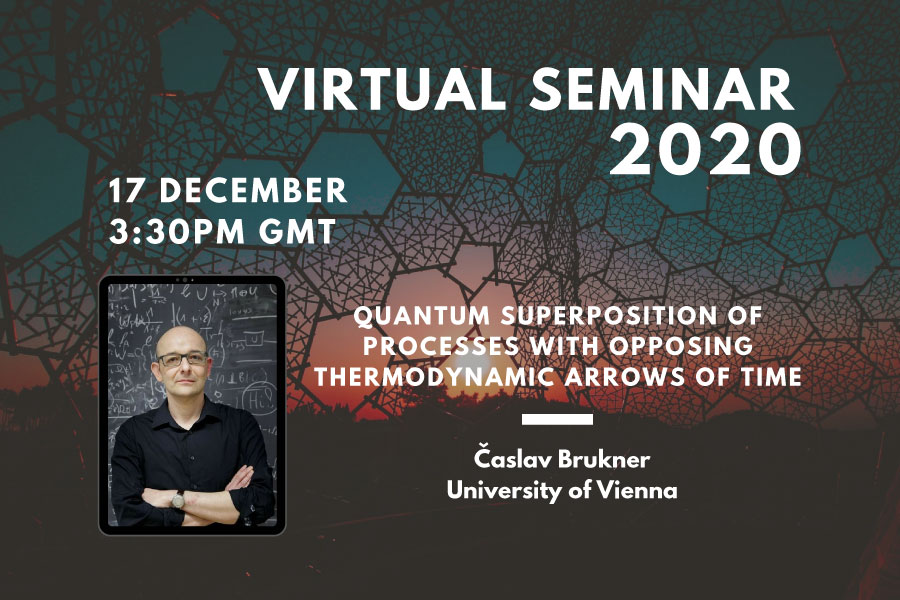Fundamental laws of physics are generally time-symmetric. The directionality of time is then often explained with the thermodynamic arrow of time: the entropy of an isolated system increases during a process, and it is constant only if the process is reversible. In this talk, I will consider a quantum superposition between two processes with opposing thermodynamic arrows of time. How is a definite arrow of time established for such a superposition? I will show that a quantum measurement of entropy change (for values larger than the thermal fluctuations) can be accountable for this. In particular, while the individual result of the measurement is random, once the value of the entropy variation has been observed, the system continues its evolution according to a definite arrow of time. Furthermore, for entropy variations lower than (or of the order of) the thermal fluctuations, interference effects can cause entropy changes describing more or less (ir)reversible processes than either of the two constituents, or any classical mixture therefrom.
